Installing a software package in Linux can be done in a variety of ways. Package managers such as YUM for RHEL-based and APT for Debian-based distributions can be utilized. If the official repositories do not have the packages then you can use PPAs For Debian distributions or DEB or RPM packages to install them. If you choose not to use the terminal, the Software Center will make installing applications much easier. If everything else fails still you can have the option of rebuilding it from the source.
Regardless of the whole setup, there are a few obstacles to overcome. Installing from PPAs may result in errors or compatibility problems, and the software center may not always have the application you’re searching for. Furthermore, building from a source necessitates a higher level of expertise and is not much a beginner-friendly method for Linux newbies.
Given these difficulties, a universal method of installing packages is strongly advised to save time and avoid errors caused by compatibility problems. Canonical was the first person who used the snap packages to execute such an idea. Snaps are software packages that simplify the installation of software applications by being containerized, cross-distribution, and dependency-free. Flatpak, which is another universal packaging system, was introduced alongside snaps.
Flatpak:
Flatpak is a cutting-edge method of packaging and distributing Linux desktop applications. This frees up developers to concentrate on development rather than distribution. They just need to develop the application as a Flatpak, and it will execute on any Linux distribution that supports Flatpak. Flatpak is a package manager and is comparable to Ubuntu’s Snapcraft. Ubuntu, on the other hand, owns the snap technology. That’s the reason that many Linux distributions do support Flatpak and not Snap.
That’s all about Flatpak. Now, let’s start its installation guide on Ubuntu 20.04. Firstly, ensure that you are using the terminal as a ‘superuser’.
Installing Flatpak on Ubuntu 20.04
Step 1: Open the terminal by pressing ‘CTRL+ALT+T’ or search it manually in the activities and update the packages list.

$ sudo apt update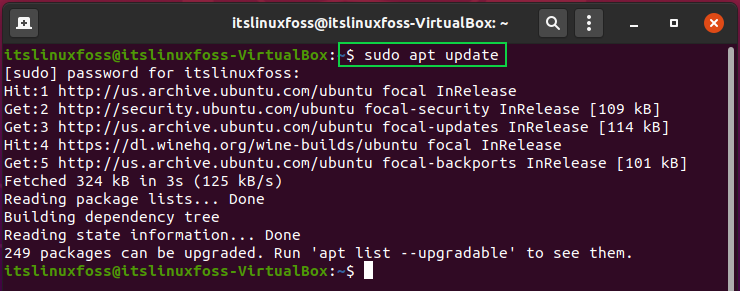
Step 2: Write-out the below-given command to install Flatpak.
$ sudo apt-get install flatpak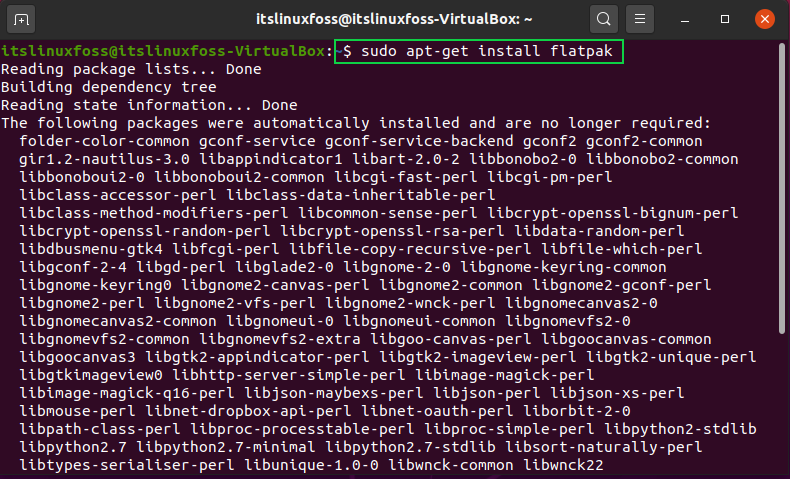

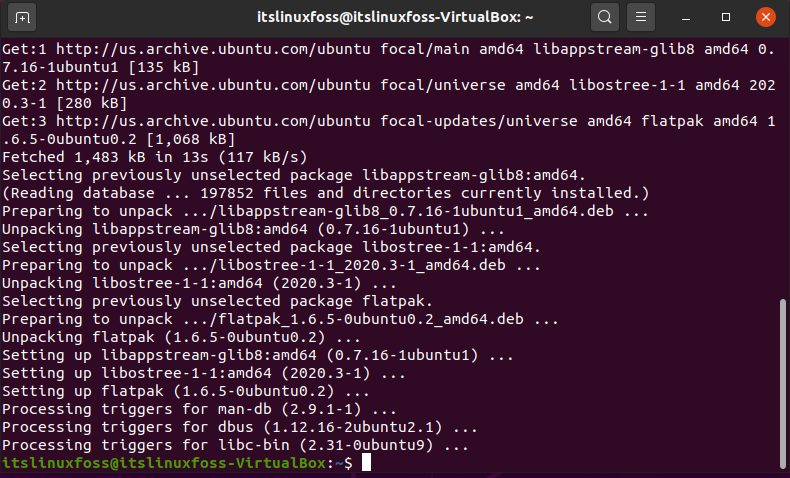
Step 3: Now add the repository of flatpak on your Ubuntu 20.04.
$ flatpak remote-add --if-not-exists flathub https://flathub.org/repo/flathub.flatpakrepo
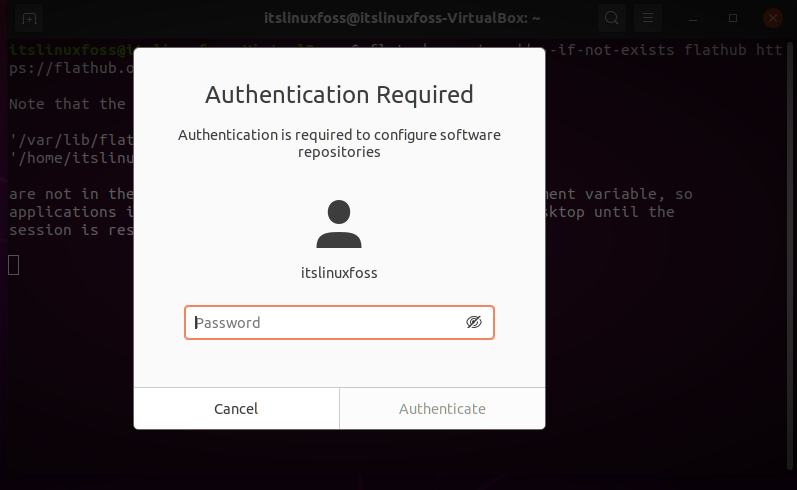
Step 4: Check-out the version of Flatpak to confirm its existence on your system.
$ flatpak --version
You can also look out for the other useful commands supported by flatpak.
$ flatpak --help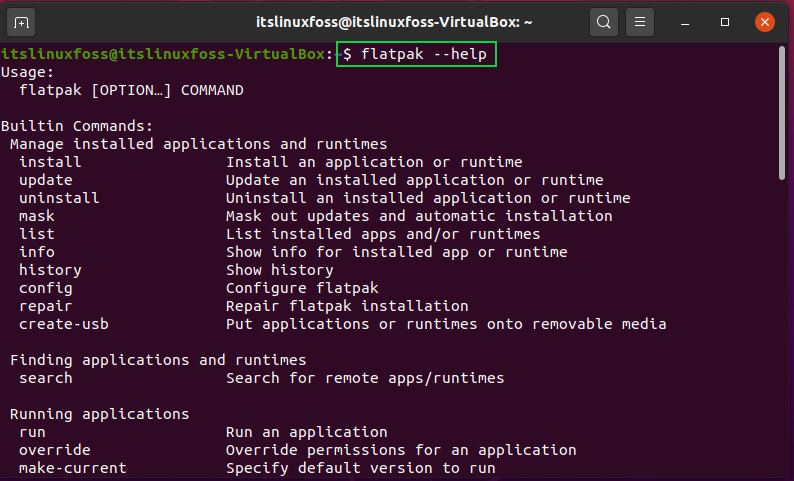
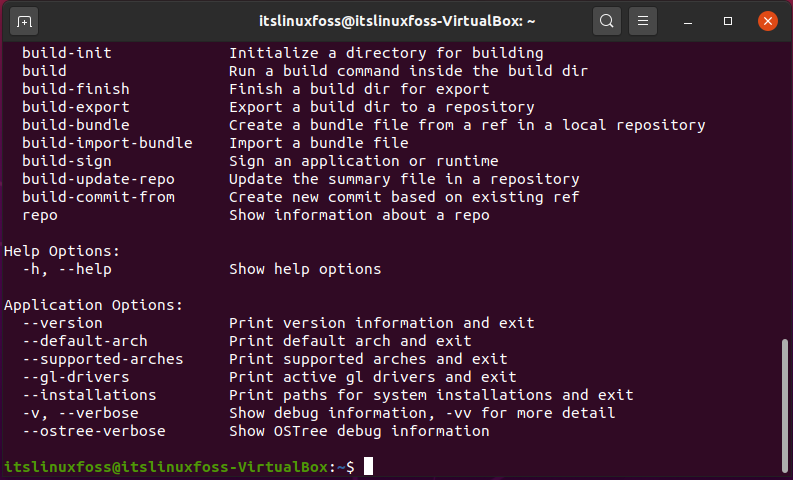
Using Flatpak on Ubuntu 20.04:
Step 1: You can search, download, execute, and uninstall any application available in the flatpak repository. For instance, We will search for ‘Spotify’ in the Flatpak repository by utilizing the following command.
$ flatpak search spotify
Step 2: In this step, we will install the required software with its Application ID using Flatpak.
$ flatpak install flathub com.spotify.Client
Enter ‘y’ to permit the process to continue.
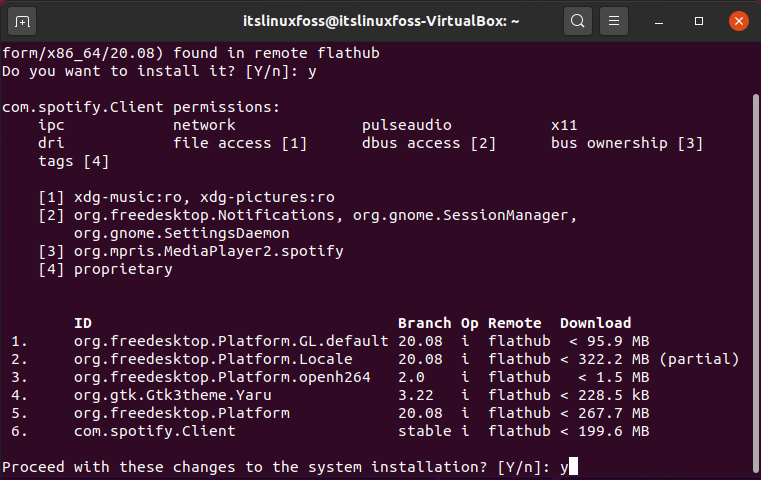
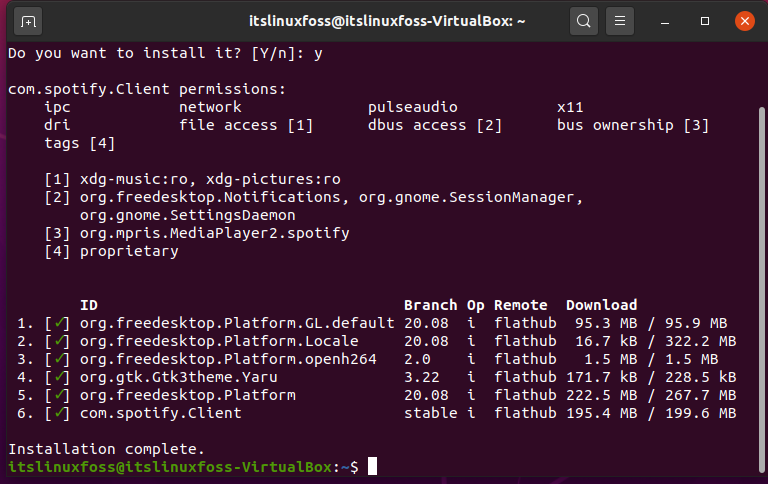
Step 3: To execute the installed application, simply use the run command with the application ID.
$ flatpak run com.spotify.Client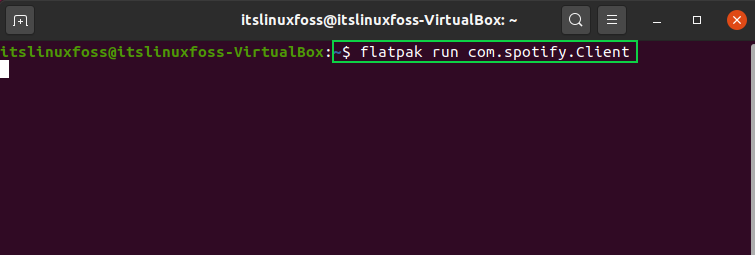
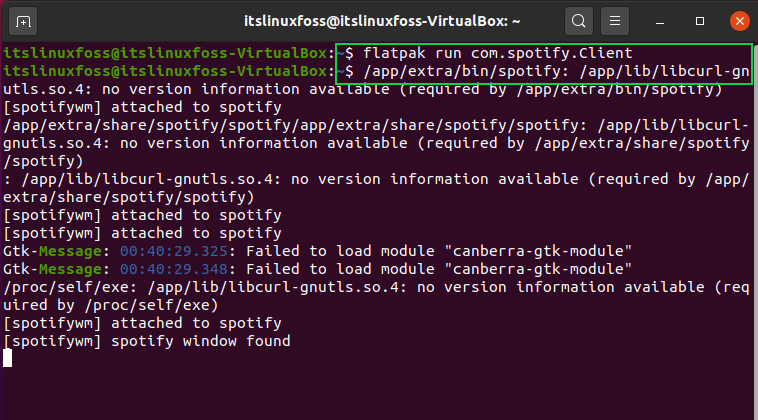

Step 4: You can also check the list of downloaded applications with Flatpak using the list command.
$ flatpak list
Step 5: Use uninstall command with application ID to uninstall any Flatpak application.
$ flatpak uninstall com.spotify.Client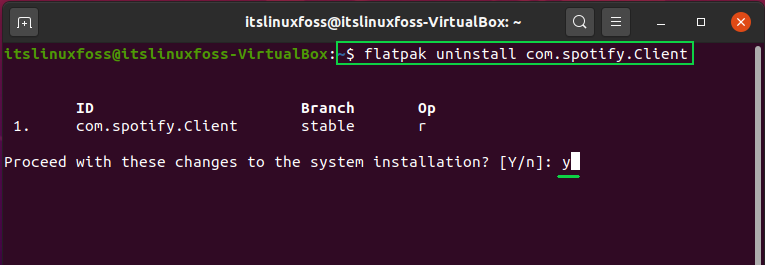

And lastly, update the Flatpak repository.
$ flatpak update
Conclusion:
This article gave a detailed view of what Flatpak is, and what you can do with it. We have provided you with a complete guide towards its installation and using Flatpak on Ubuntu 20.04.

TUTORIALS ON LINUX, PROGRAMMING & TECHNOLOGY